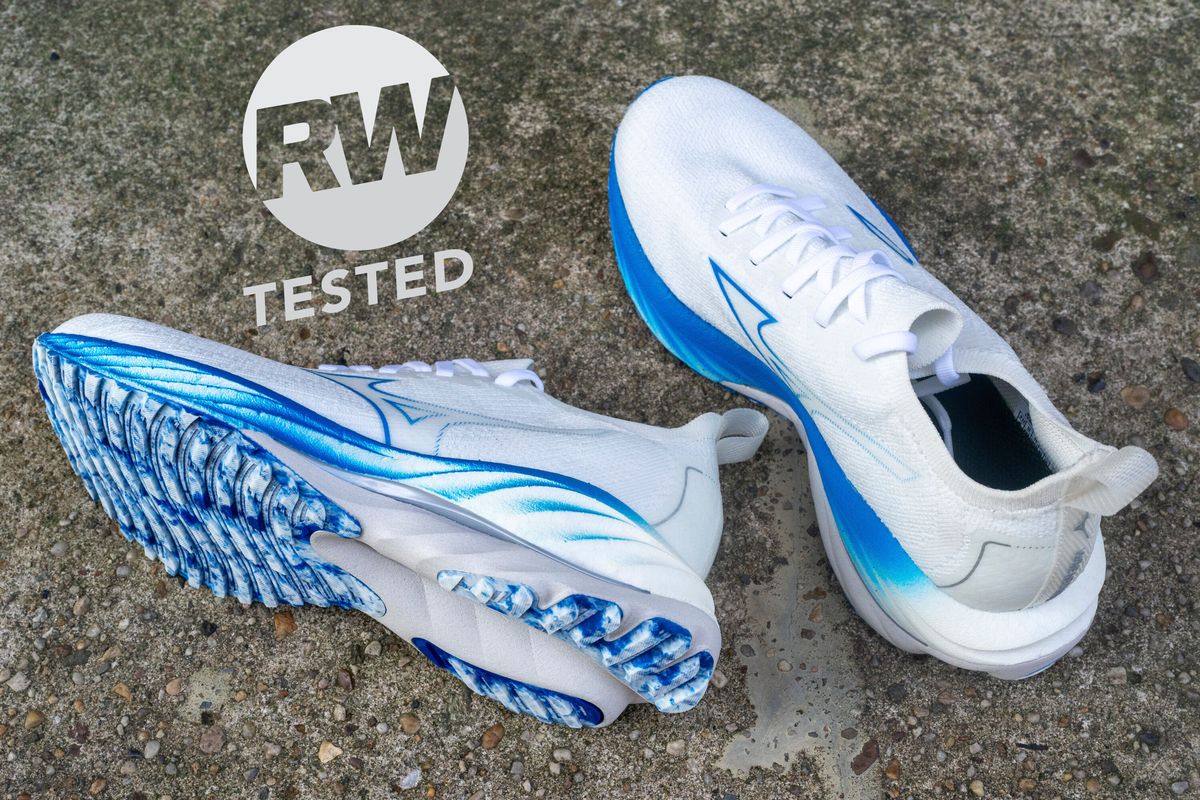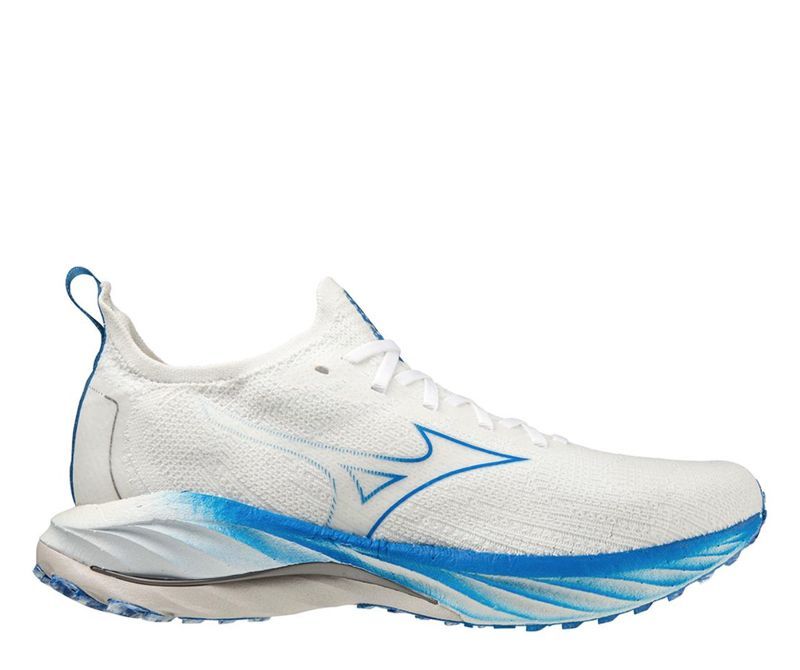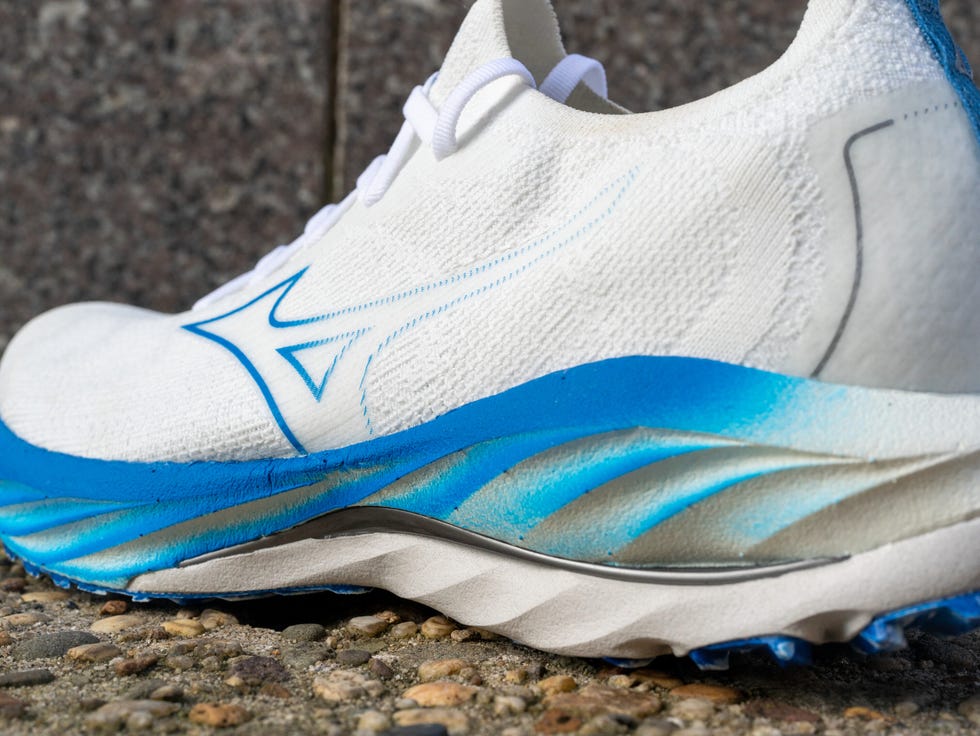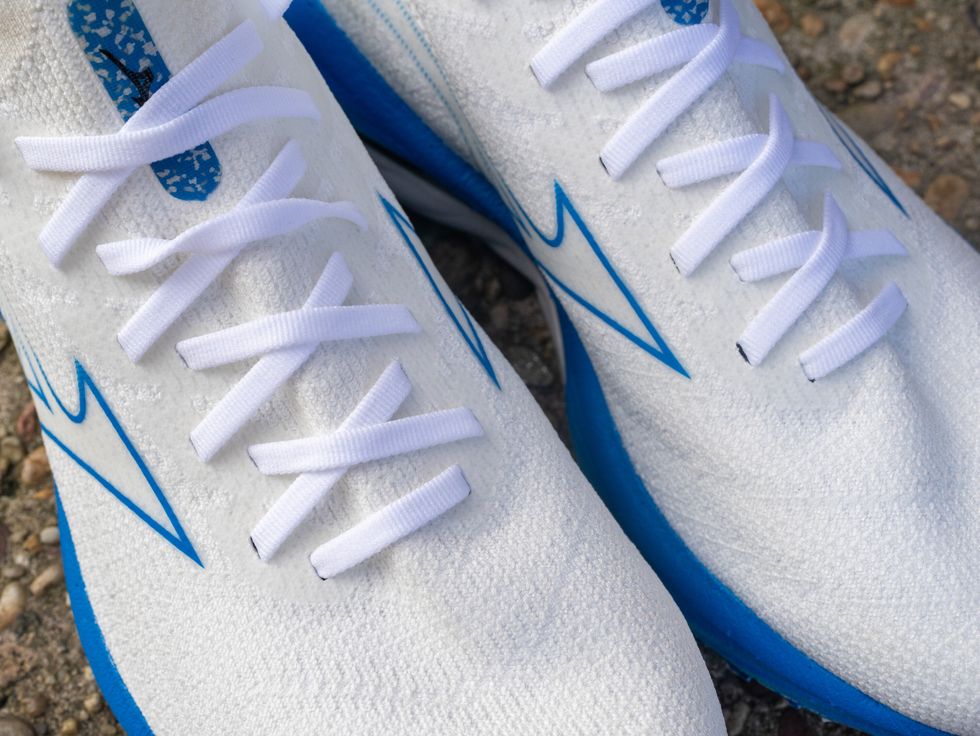The RW Takeaway: Built with sustainable versions of Mizuno’s most responsive technology, this daily trainer feels light and peppy at tempo pace, though the upper was hit-or-miss for comfort during long runs.
- Midsole uses new Pebax Rnew plate and castor bean-based Enerzy Lite foam
- G3 rubber outsole handles wet leaves and slick pavement remarkably well
- The knit upper isn’t dyed, saving water, but skimps on support and lockdown
Price: $220
Type: Road
Weight: 8.9 oz (M), 7.4 oz (W)
Drop: 12 mm
Buy Men’s Buy Women’s More Images
More From Runner's World

What’s next for running shoes after bouncy new foams and carbon fiber? The Wave Neo series is what Mizuno sees when it looks into a crystal ball: those two key technologies, but made more sustainably. Right now, the two shoes in the collection—the Wind and its more cushioned $250 sibling, the Ultra—aren’t cheap. Both are daily trainers with price tags usually found on racing shoes that pay dividends with PRs, but neither Neo is meant for race day. Still, you’re getting the brand’s absolute cutting-edge innovations in regard to energy: maximum return for your stride, and maximum savings for the planet.
The Neo Wind reminds me a bit of Mizuno’s widely loved Wave Rider. Its midsole is just a half millimeter thicker than the Rider 25, with the same heel-toe drop and similar setup underfoot—a stiff curved midfoot plate sits between a top and bottom layer of foam.
On the run, the shape felt familiar, but the midsoles responded differently. The Rider is plush and soft on touchdown, firming up right as you’re about to toe off. In the lighter and stiffer Wind, that firm sensation is there from the moment you hit the pavement. It’s better suited for days when the pace gets a little spicy—the quicker your turnover, the more the Wave plate feels like a springboard.
In our experience, even when bio-based foams claim similar energy return to petroleum versions, the two materials don’t feel identical. But castor beans appear among the best copycats. They’re the basis for both the Pebax Rnew used in this Mizuno’s Wave plate, and the new version of its Enerzy Lite foam. The sockliner and a wedge of foam beneath the heel are a hybrid of regular Enerzy and Bloom EVA (a thermoplastic rendered with algae).
“The cushioning has a slight give that makes the shoe forgiving, without being too plush or difficult to push off from,” said one tester, whose 45-mile weeks include 8:00-pace easy runs with 5:50-pace tempos and hill sprints. “The bounce and responsiveness were most noticeable at faster paces and die out when you slow down. I felt comfortable on easy runs, but I most liked using the shoe at marathon pace and threshold efforts.”
White uppers are trending, and though I’m chronically unstylish, this is one look I understand. Dyeing yarn requires a lot of water. Skipping the process entirely saves resources. Mizuno took those recycled, undyed yarns and spun them into a knit upper that is basically a sock with eyelets and laces—there’s no separate tongue and little support. The design achieves a secure hold in the rear foot, thanks to a deep heel cup with extra padding, but doesn’t have a super comfy fit.
“The back of the shoe ran pretty high up my Achilles and ankle, which caused discomfort and rubbing,” said one tester, who has an average arch height. “While I didn’t have problems with heel slippage, the loose fit meant I had to pull the laces as tight as possible to get proper lockdown.”
More Testers’ Takes
Tim B. | Tester since 2017
Arch Height: Medium | Pronation: Neutral | Footstrike: Midfoot
“I love how the lacing and tongue are integrated right into the upper; the shoe just slides on like a slipper. It’s super comfortable, hugs the ankle nicely, and feels supportive. I was able to tighten it the appropriate amount without ever feeling like it was too tight or loose, and I didn’t have to make any adjustments after I laced up. The material stretched well with my foot and was roomy in the toebox. For me, I felt the cushioning was better geared to my shorter runs (between five and six miles). I didn’t have a problem with the shoes on longer runs, but I could feel the ground a little more as the cushioning compressed.”
Dannah J. | Tester since 2021
Arch Height: Flat | Pronation: Overpronator | Footstrike: Midfoot
“I’m a fan of soft shoes—I usually train in Hokas and race in the Nike Vaporfly—and this shoe didn’t disappoint. While it isn’t as cushy as my Hokas, it still provided a good amount of protection and shock absorption. If I was doing a long run with a few fast miles at the end, I would opt for this shoe rather than my Hokas simply because it’s less bulky yet still provides good cushioning. However, the upper design and lacing didn’t work well for me. My orthotics kept getting pushed out of the shoe and the fit was not as secure or supportive as I had hoped. I sometimes felt like I was slipping around in the shoe.”
















